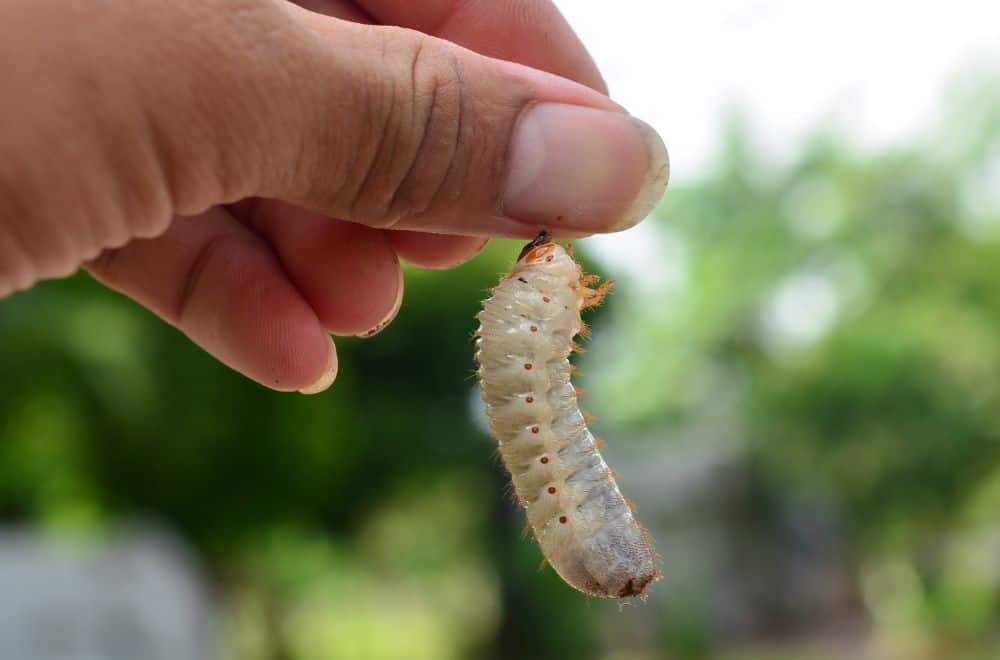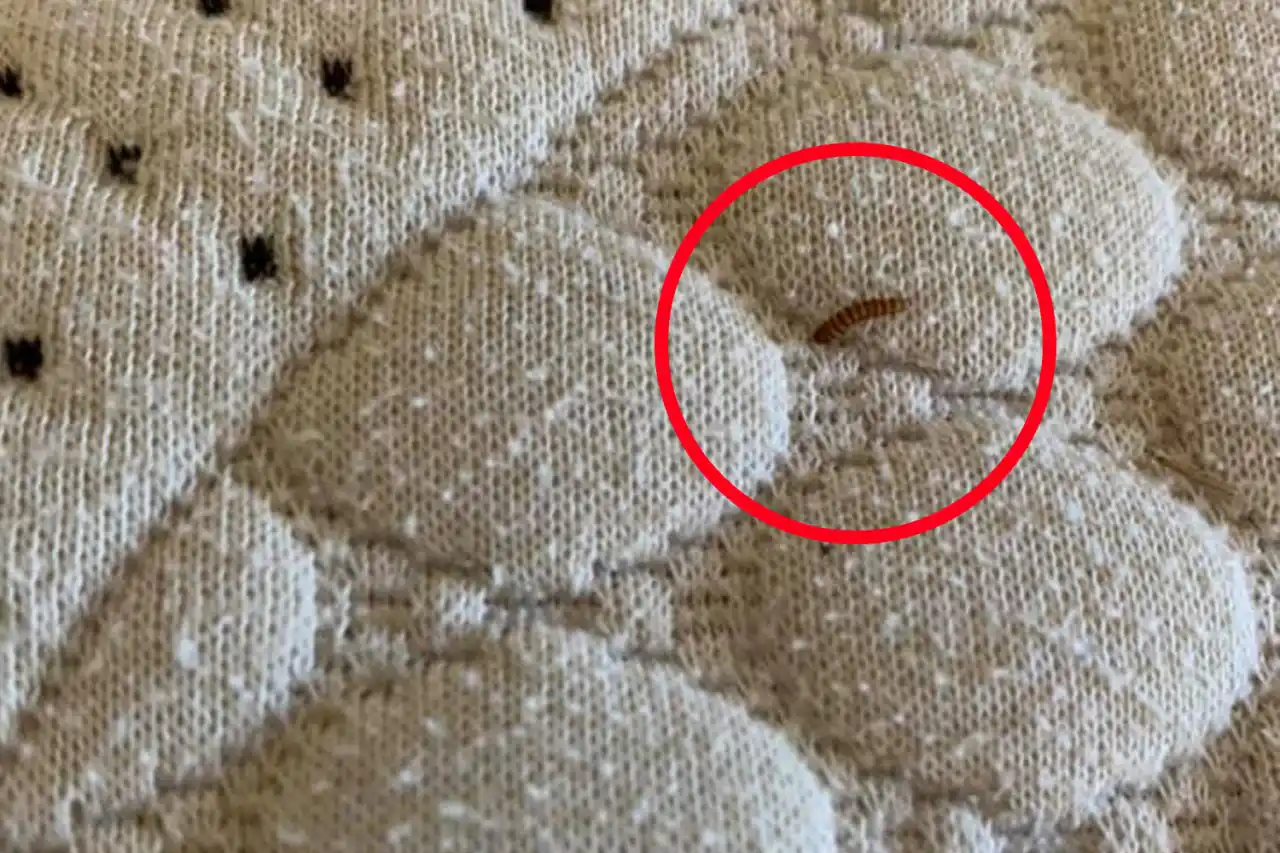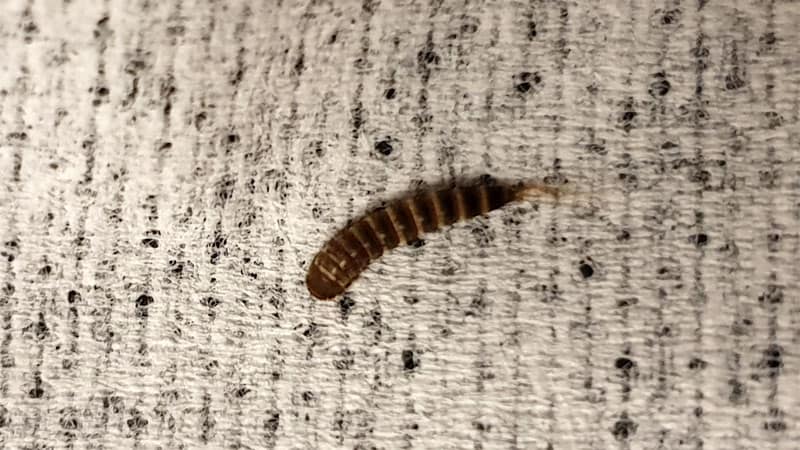Sometimes, living in an old house or a college dorm can result in the horrible experience of finding worms in beds. It is a typical case in dirty places with poor sanitation. There are a few bed worm types, but all are unpleasant.
Even though they never carry diseases, these disgusting creatures often cause allergies and can severely damage bed linen and mattresses. Therefore, finding how to get rid of bed worms can be crucial for your peaceful sleep.
What Are Bed Worms?
Bed worms are not particular bugs but insect larvae, like carpet beetles and moths. Despite established opinions, these parasites don’t live exclusively on beds, but you can find them in numerous dark and humid places in your home.
However, larvae enjoy spending time in beds to feed on linen made of natural fabric like wool and silk. Their life cycle includes four stages:
- Pinhead-sized eggs clustered in groups of 40 to 50
- Pale, worm-like larvae
- Dark pupas with a recognizable hard shell
- Reddish-brown, 0.50 inches (1.27 cm) long adults
They typically appear because of the following:
- Dirty living space, bed, and laundry
- Humid and unclean kitchen and bathroom
- Cracks on walls and window or door frames
- Pets not treated with antiparasitic agents
- House plants
- Spilled drinks and dropped food
- Body oil, sweat, and dead skin cells on the linen
However, there are only two ways for bed worms to get into your mattress:
- By laying eggs on the bed and bedding
- When people or pets infected by pinworms transfer them onto the sheets
If you like organic materials like silk, wool, leather, fur, or feathers, be prepared that bed worms share the same affection. They feed on these materials, and you can expect to see them when failing to change, ventilate, and wash bedding regularly.
Bed Worm Types
As I have already mentioned, bed worms are not a particular species but come in various forms, such as:
Pinworms
These 1/4 to 1/2 inches (6 – 12.7 mm) long parasitic worms are the only harmful creatures in a group. They come from the human or pet anus and may cause itching and even astigmatism or eosinophilic meningitis when left untreated.
Tiny pink, red, brown, or black worms
These 1/8 to 1/4 inches (3 – 6 mm) long bed worms are carpet beetle larvae. They commonly live on clothing or bedding and feed on cotton, leather, wool, fur, and feathers.
Tiny orange worms
In most cases, it is about rice grain-like, 0.04 to 0.5 inches (1 to 12 mm) long cloth moth larvae. They typically feed on old clothes, bedding, carpets, and dead skin cells.
Tiny white worms
Pale white or cream maggots live in places full of rotting matter and beds covered by the animal fabric. They mostly end up in bed through pets.
Are Bed Worms Harmful?
Since bed worms don’t bite or feed on your skin and blood, they are actually harmless to you. However, their presence is disgusting and annoying, and their larvae are real destroyers. Additionally, you can expect them to damage:
- Your clothes made of silk, feather, and fur
- Synthetic materials blended with organic materials
- Wool blankets and carpets in your home
- Bed sheets and covers
- Your books
Worms can cause severe allergic reactions in sensitive people and itchy bumps on the skin. Moreover, pinworms are human parasites living in the colon and rectum, and their presence requires visiting the doctor and necessary testing.
Ways to Get Rid of Bed Worms
There are a few efficient ways to eliminate unwanted bed worms in your mattress or bed, but you need to be persistent. The first step is to identify their location and define the species.
The sure sign of a worm present is egg clusters, blood stains, or dark specks on the bed surface or your pillow, sheets, and mattresses. Then, it is time for the action of extermination!
1. Eliminating the host infestation
First, you should look for the infestation source. It is always in some dark and humid places, like:
- Unventilated and dirty spaces
- Closets with old clothes you never use
- Potted plants
- Bird nests in the attic
The next thing to do is to eliminate the host infestation and identify and remove eggs and adult bugs before they are prepared for reproducing. Finally, it is time to get rid of the host adult infestation in the bed and the entire house in a few highly efficient ways.
2. Clean and sanitize the house

As the old proverb says, cleanliness is half health. Therefore, you should regularly clean your home, throw away old, broken things, and wash dirty pieces. Be aware that a cluttered environment is a paradise for worms to thrive, so you should get rid of things that are potential hiding places for these horrible creatures.
Take things and clothes out of drawers, wardrobes, and cabinets and thoroughly clean them inside and outside. There is no need to keep old clothes and shoes you haven’t used for years. Just toss them!
3. Vacuuming the bed
Vacuuming bed bugs is a convenient way to eliminate these menaces from your bed physically. Stand up the mattress and thoroughly clean any adults and eggs in the bed frame, box spring, headboard, and around moldings.
Pay particular attention to seams and possible cracks. Then, keep going with vacuuming the bedroom from the floor to the ceiling, including areas:
- Around and behind the furniture
- Inside the wardrobe
- Each dresser drawers
Finally, repeat the procedure in all other rooms, particularly the kitchen and bathroom.
4. Washing and airing dirty laundry and sheets
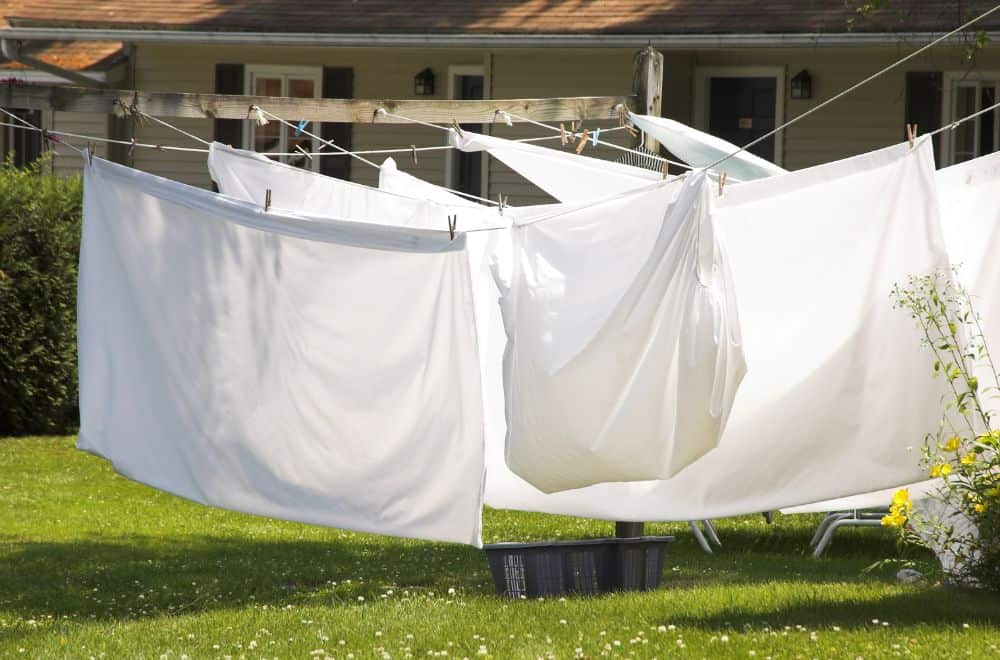
Since high heat quickly kills bed worms, one of the best and simplest methods of getting rid of them is to run your dirty laundry and bedsheets through the dryer.
Then, wash them in the washing machine at the highest temperature that a particular type of material allows, preferably above 130 F (55 C). The final blow will be ironing to destroy possibly surviving bed worms and dust mites.
Another option is to soak laundry and clothes in soapy water and let them sit for approximately 30 minutes. Then rinse and air-dry them before ironing.
You can also apply the secret of our grandmothers and regularly expose bed sheets, blankets, and pillows to the sun during the summer. It is an excellent natural way to disinfect them.
5. Freezing
It is an efficient way to eliminate adult bed worms and their eggs, particularly from items you can’t expose to high temperatures. Pack your pillows, blankets, and clothes made of leather, feathers, wool, or fur in vacuum-sealed plastic bags and put them in the freezer.
Let them sit there for 72 hours at -4 F (-20 C) to kill bed worms, and then wash your items in the washing machine at the permitted temperature. It is necessary because eggs sometimes survive temperatures above -9 F (-23 C).
6. Cleaning with a steam cleaner
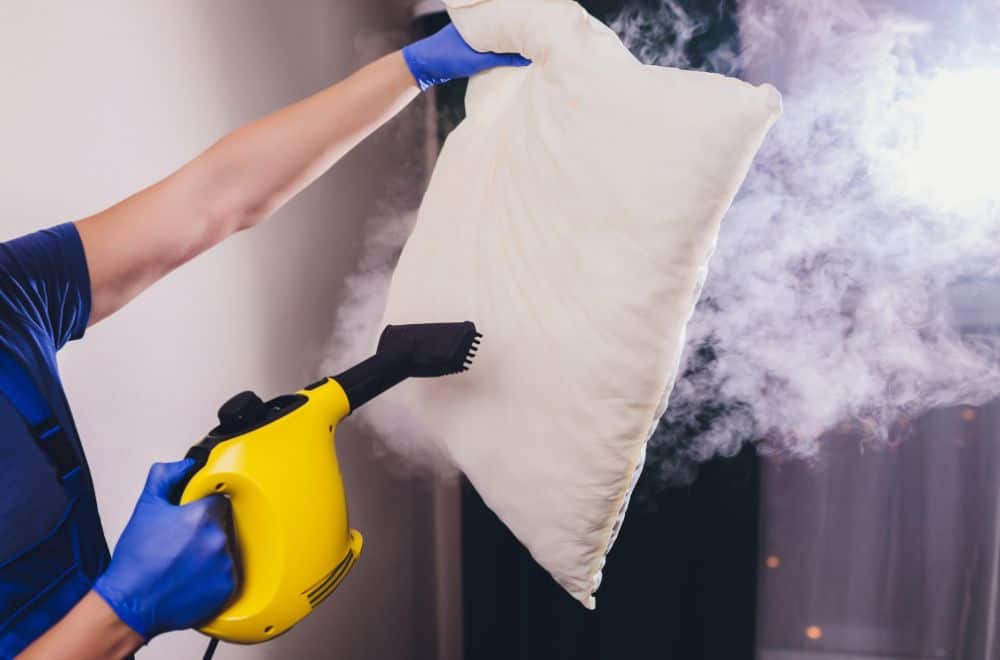
Some worm species can survive for several hours at 122 F (50 C) and approximately 15 minutes at 130 F (54.5 C). In other words, you need to use a steam cleaner providing a temperature of at least 140 F (60 C) to kill them immediately.
Since a steam cleaner develops a temperature of 130 to 325 F (54.5 – 163 C), it is a highly efficient option for killing bed worm eggs and adults in your bed. Hot water vapor will clean and sanitize fabric deeply, but you can use this device only for items resistant to water and high temperatures.
Otherwise, you will do more harm than good. For instance, almost all synthetic materials, memory foam, and even some organic materials can’t stand hot steam.
7. Dry-cleaning
Calling a professional dry-cleaning company is the quickest and most reliable way to clean your house of bed worms. These professionals will clean all pillows, rugs, and dog or cat beds.
8. Spraying down the cracks

Look for cracks and hidden crevices in the house, like those on the walls and baseboards, and spray them with an appropriate insecticide. Be careful with different materials and always check what chemical is safe to use in advance.
It is recommended to fill in cracks around door frames and windows with foam insulation if possible. Then, repair existing gaps on the floor with mastic caulking.
9. Treating pets for parasite infestations
Since pets spread some bed worm types, you need to eliminate spreading parasites through their hair and feces by cleansing them of parasites regularly. Besides, always apply a particular insecticide to their beds and favorite spots.
10. Applying natural remedies

Essential oils
Spraying essential oils on mattresses and around beds can help eliminate bed worms. The best options are:
- Neem seed oil
- Peppermint
Always start with peppermint or neem spray and spray it over the bed, including the bed frame and cracks existing around it. Some oils are also excellent repellants, so you can spray your mattress regularly with the following:
- Lavender oil
- Tea tree oil
- Lemon oil
- Eucalyptus oil
- Cinnamon oil
The procedure includes mixing the chosen oil with water in a spraying bottle and its regular use to repel or kill eggs and adults. Be careful with essential oils because some are highly toxic for cats and dogs.
Diatomaceous earth
You can use this powder containing the fossilized algae remains to naturally kill bed worms by absorbing fats from their exoskeleton and causing dehydration. The best option is to spray all areas around the bed and existing cracks.
11. Using chemical products
Chemicals are the fastest way to get rid of bed worms, so you can solve the problem by buying a reliable agent to kill eggs and adults. Be careful and pick out only those registered for use on particular insects and strictly follow the label instructions. The best options include products such as:
Pyrethrin-based insecticides
These products based on chrysanthemum flower compounds efficiently destroy numerous insects, including bed worms. Nowadays, you can find them in two forms:
- Aerosols
- Liquid concentrates
Fortunately, these chemicals are non-toxic and safe for homes with children and pets when used according to instructions, but be careful and check the spray label before using it. Since not all come with the same formula, applying some products can irritate the skin and become harmful when inhaled.
Permethrin
This synthetic insecticide paralyzes bed worms’ nervous systems and kills them eventually. It is registered for outdoor use to control ticks and fleas, but you can apply aerosol spray on bedding, carpets, and furniture.
Unfortunately, this chemical is toxic to pets and moderately toxic to humans, causing eye or throat irritation.
Neonicotinoids
This insecticide also paralyzes bed worms’ nervous systems and fast-acts on eggs, larvae, and adult parasites. Besides, you can expect long-lasting residual action when using aerosol.
12. Calling an exterminator
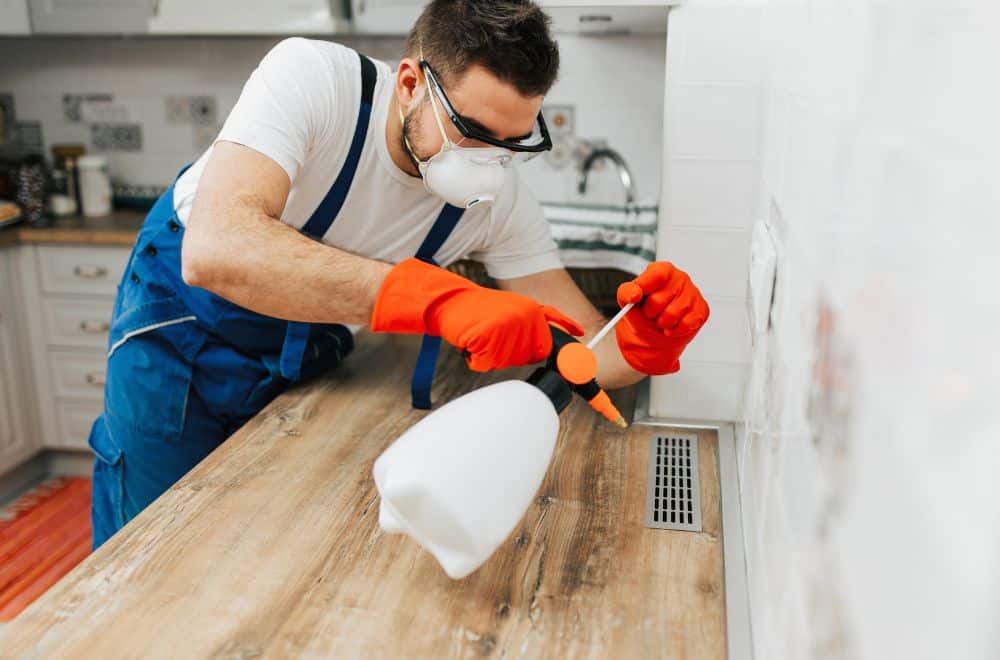
When the situation gets out of control, it is time to consider asking for professional help. Exterminators will find and destroy the infestation source, even when you have a problem doing it yourself.
The procedure includes contacting a PMP (pest management professional) and several professional visits. Unfortunately, most infestations require more than one treatment.
Look for experienced professionals and always check the company reviews before hiring them. Visit the EPA website and find proven guidelines for choosing a reputable pest control company.
Ways to Prevent Bed Worms
The best possible solution is to avoid waiting for bed worms to appear in your home. Therefore, give your best to prevent their existence by:
- Vacuuming the house thoroughly according to the schedule
- Removing unnecessary clutter
- Washing clothes and linen at high temperatures
- Regular essential oils applying and keeping lavender bags in the closet
- Using plastic bags to put away seasonal clothes
- Sealing your luggage when traveling
- Using mosquito nets
- Buying a mattress encasement
- Applying silicone or acrylic latex caulk to seal crevices and cracks
Summary
Unlike bed bugs, bed worms are larvae that feed on fabric that appear in several colors, white, orange, creamy, red, brown, and black. They are harmless but can cause an allergic reaction and eye or skin irritation in humans. The best option is to keep your home and bed clean and give your best to remove them once they appear.
